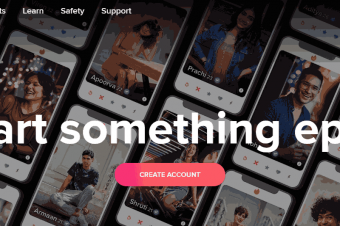Pmi Acp Certification Managing Stakeholder Engagement
Tags: PMI-ACP
Agile Certified Practitioner Certification Program - Course 7 of 8 - Managing Stakeholder Engagement
Last updated 2022-01-10 | 4.4
- Classify members of a project community according to stakeholder types and- Recognize the actions that engage stakeholders throughout the stages of an agile project
- Describe the concept of decision framing and use a decision gradient to lead a group in making a decision
What you'll learn
* Requirements
* Useful but not compulsory to study before - Course 1: Agile Project Management Essentials* Course 2 - Adopting an Agile Approach
* Course 3 - The Scrum Development Process
* Course 4 - Initiation and Requirements Gathering
* Course 5 - Planning and Monitoring Iterations
* and Course 6 - Leading an Agile Team.
* Courses under development - Course 8: Ensuring Delivery of Value and Quality in Agile Projects
* This is course 7 of 8 from the Agile Project Management - The PMI-ACP (Agile Certified Practitioner) Certification Program
Description
Welcome to course 7 of 8 of the Agile PMI-ACP (Agile Certified Practitioner) Certification Program. This course is on Managing Stakeholder Engagement.
After completing the first section on Keeping Stakeholders Actively Involved, you will be able to:
classify members of a project community according to stakeholder types,
distinguish strategies for ensuring stakeholder commitment, and
recognize the actions that engage stakeholders throughout the stages of an agile project.
After completing the second section on Tools for Stakeholder Engagement you will be able to:
describe the concept of decision framing,
use a decision gradient to lead a group in making a decision,
recognize an appropriate level of knowledge sharing on an agile project, and
identify strategies for gathering stakeholder feedback.
Who is your instructor?
My name is Sorin, and I will be your instructor. I am a trainer and project manager with more than 10 years of experience. Before Udemy, I trained hundreds of people in a classroom environment – civil servants, managers, project workers, aid workers and many more. And I managed projects in the fields of justice, corrections, regional development and human resources development.
How will you benefit?
This course is intended for project managers, program managers, or anyone who wants to efficiently participate in agile projects. It is aligned with the Agile Certified Practitioner exam objectives developed by the Project Management Institute® and Certified ScrumMaster learning objectives.
Training videos, examples, exercices and quizzes will help you learn all about the Managing Stakeholder Engagement. And, if you take your time to go through all the learning materials this will entitle you to claim 5 PDU’s for the PMI certification exams and to maintain your PMI certification.
So, thank you for considering this course! Now, go ahead, and hit that "Take This Course" button. And, see you on the inside.
Who this course is for:
- Intended for project managers, program managers, or anyone who wants to efficiently participate in agile projects.
- Aligned with the Agile Certified Practitioner exam objectives developed by the Project Management Institute® and Certified ScrumMaster learning objectives
- Will entitle you to claim 5 PDU’s for the PMI certification exams and to maintain your PMI certification
Course content
5 sections • 41 lectures
Course overview Preview 06:27
Welcome! This is the seventh course out of eight of the Agile PMI-ACP (Agile Certified Practitioner) Certification Program. This part is on Managing Stakeholder Engagement.
Program overview Preview 09:59
This video will help you understand better the content of the other courses that will form this Agile Project Management - The PMI-ACP (Agile Certified Practitioner) Certification Program.
Course guidelines Preview 03:19
You might know this. I’m adding it to any course in the introductory section. But, just in case, some suggestions to improve your learning.
Course Introduction
Understand course content, program structure and learning on Udemy
The Agile Manifesto and Agile Principles Preview 00:01
The Agile Manifesto and Agile Principles
Stakeholder types and responsibilities Preview 09:33
An agile project evolves as it progresses, through a continuous process of inspection and adaptation. For this approach to succeed, stakeholders have to participate actively during the course of the development process. Rather than simply making plans and then ensuring the plans are followed, they need to shape a project – and the product it delivers – as work proceeds. So it's vital for an agile project to have a highly engaged project community.
Strategies for stakeholder engagement Preview 15:26
The commitment levels of the various stakeholders can vary. Stakeholders may show a high level of engagement throughout a project. Or you may have to deal with stakeholders who are reluctant to commit, or who are enthusiastic only at first, becoming less so as a project progresses. A lack of stakeholder engagement can result in delays – for example, with uncommitted stakeholders failing to review features or making vital decisions too late – and compromise a project's overall success.
The APM model Preview 01:53
In an agile project, one of the project leader's key responsibilities is to keep stakeholders engaged, and to manage the relationship between them and the development team. Actively engaged stakeholders are essential because their contributions help the development team maximize the value a product will have for the customer.
Initiation phase Preview 05:45
During the initiation phase, the product owner - or other form of customer proxy - is responsible for
establishing the product vision, which is a high-level description of the product that a project will deliver.
Its aim is to inspire stakeholders and team members, and to ensure that everyone has a common
understanding of the product.
Release planning phase Preview 07:56
A release is a delivery of value to the customer which occurs at the end of a project, or at specific intervals during the course of product development. During the release planning phase, the team plans the project work that needs to be completed in order to develop the product and roughly assigns work items or user stories to iterations, based on a prioritized order defined by the customer.
Development phase Preview 04:24
At the beginning of each development phase, stakeholders may participate in iteration –or sprint – planning. Once an iteration starts, some stakeholders focus only on monitoring the development team's progress. Others are more extensively involved, guiding and advising the team.
Review and adapt phase Preview 03:56
During the review and adapt phase, the product team, managers, customer, and sometimes end users and developers from other projects take part in product demonstrations and review meetings. They evaluate the working features produced by the development team in terms of their functionality, value to the customer, and overall quality. They may also provide feedback on the team's performance and the project's status.
Close phase Preview 04:05
The close phase begins when the development team has completed all product backlog items. Before the product can be released, the project leader needs to send the product owner and other stakeholders a deployment notification.
Keeping Stakeholders Actively Involved
Classify members of a project community according to stakeholder types and recognize the actions that engage stakeholders throughout the stages of an agile project
Decision framing Preview 04:11
In a traditional project, most decisions are made during initial project planning. But in an agile project, most decisions are made as a project progresses and understanding of a product evolves. For this reason, agile projects depend on fast, effective decisions. An agile project can't afford slow decision-making, because delays in decisions mean delays in the project.
Using a decision gradient Preview 12:32
Once you've framed a decision properly, you need to ensure that everyone you've identified as relevant participates in the decision-making process. For participatory decision-making to work, everyone's opinions first have to be heard and discussed.
This helps ensure that diverse points of view, based on differing areas of expertise, are taken into account – resulting in better final decisions. It also helps build trust in the decision-making process.
Knowledge sharing in agile projects Preview 03:35
According to the Agile Manifesto, agile methodologies emphasize "working products over
comprehensive documentation." This means that functional software is valued more than detailed
documentation. But it doesn't mean that documentation is considered unnecessary, or that the need for
communication between the team and stakeholders is ignored.
Documentation Preview 06:11
An agile approach recognizes that a development team doesn't need that much information to get its job done. So by agile standards, such documentation – which goes beyond what's "just enough" – is excessive.
Agile teams document only the information that will help them complete the required work successfully.
Assessing Organisational Culture Preview 00:00
Assessing Organisational Culture
Interaction Preview 04:34
On an agile project, knowledge sharing depends largely on personal interaction and face-to-face communication. Agile practices like pair programming, standup meetings, and the use of on-site customers all encourage the free flow of knowledge between individuals.
Open access to information Preview 08:29
In an agile project, success often depends on accurate information passing from one person to another. Because of this, it's important that access to information is open and free-flowing. Traditional project management involves controlling the flow of information by restricting knowledge to certain people and distributing information on a "need to know" basis.
Release and iteration planning Preview 12:17
The main aim of an agile approach to development is to maximize the value that a project delivers to the customer. A project team does this by regularly delivering working software that meets the customer's needs – and by frequently inviting and reacting to feedback from the customer.
An agile team uses specific techniques to gather feedback during release planning, iteration planning, and iteration reviews.
Iteration reviews and testing Preview 10:02
In an agile project, each iteration ends with an iteration review meeting. During the meeting, the team demonstrates what it has developed to managers, customers, and other stakeholders, and then invites their feedback.
The team members speak about their work on the iteration and the results, and stakeholders have the chance to give direct feedback and ask questions. Developers respond to these immediately, and everyone is free to participate in the discussion.
Tools for Stakeholder Engagement
Identify causes of problems on agile teams and understand strategies for overcoming agile team challenges and Recognize strategies for boosting team performance and understand agile coaching
Course project (optional) Preview 00:22
Course project (optional)
Managing Stakeholder Engagement on an Agile Project Preview 06:02
Congratulations for finishing course 7 of 8 of the Agile PMI-ACP (Agile Certified Practitioner) Certification Program. This course is was on Managing Stakeholder Engagement.
Managing Stakeholder Engagement
Course wrap-up and overview
Section Overview Preview 02:10
This course covers the key exam concepts of Kanban, work in progress or WIP, lead time, cycle time, and Little's Law. You'll also learn about Agile Team Spaces, sharing the product vision, and identifying and reducing defects.
Waste Types Preview 05:51
In Lean project management waste, or the Japanese term Muda, is defined as any activity or process that doesn't add value to a product but does add cost. Lean's original Seven Forms of Waste include transportation, inventory, motion, waiting, overprocessing, overproduction, and defects. The new eighth form of waste is skills or non-utilized talent.
The Kanban Pull System Preview 06:14
In a Pull-based system, the customer demand creates what is called pull. Production or development relies on pull rather than on complicated market forecast to determine how many products to deliver.
Kanban Boards Preview 05:36
A Kanban board is a tool that agile teams often use to visualize workflow through a system. While Kanban principles are often used in IT and software development, they can be helpful in any industry.
Determining Lead Time and Cycle Time Preview 05:59
In lean project management, one of the key concepts is process improvement. Lead time and cycle time are two important metrics that help determine how lean a process is. In other words, how much of the time dedicated to creating a product is value added.
Process Cycle Efficiency Preview 06:53
Lean manufacturing is a management philosophy that focuses on reducing waste and implementing a flow-based production line rather than a batch and queue method. It's aimed at reducing costs and improving overall customer value.
Little's Law Preview 07:17
In order to maintain a stable process with minimal chaos organizations should attempt to minimize work in progress or WIP in their processes. One way to do this is by setting WIP limits. WIP limits help to reduce bottlenecks, improve the rate of throughput, and control the workload levels of project team members.
Communicating the Product Vision Preview 06:03
Stakeholder engagement is a fundamental part of project management. It's important to be able to express the product vision to stakeholders in order to gain support in common understanding about the product requirements. The product owner often collaborates with other key stakeholders to develop a product vision.
Defining the Agile Team's Physical Space Preview 06:01
With today's modern technology there are a variety of tools to bring teams together virtually.
Exercise - Key Agile Exam concepts Preview 05:09
Agile teams achieve efficiency by leveraging many of the tools from Lean Management, but also by valuing individuals and interactions.
In this exercise, you'll demonstrate that you can identify characteristics of waste recognize the relationship between PCE variables identify characteristics of Agile environments
Agile Key Exam Concepts Preview 01:52
This course covers the key exam concepts of Kanban, work in progress or WIP, lead time, cycle time, and Little's Law. You'll also learn about Agile Team Spaces, sharing the product vision, and identifying and reducing defects.
Agile Key Exam Concepts
This course covers the key exam concepts of Kanban, work in progress or WIP, lead time, cycle time, and Little's Law. You'll also learn about Agile Team Spaces, sharing the product vision, and identifying and reducing defects.
PMI Certification Info Preview 00:04
PMI Certification Info
Bonus Lecture Preview 00:05
More management courses at discounted prices








 This course includes:
This course includes:







![Java Certification : OCA (1Z0-808) Exam Simulation [2021]](https://img-c.udemycdn.com/course/100x100/1464072_c364_6.jpg)







